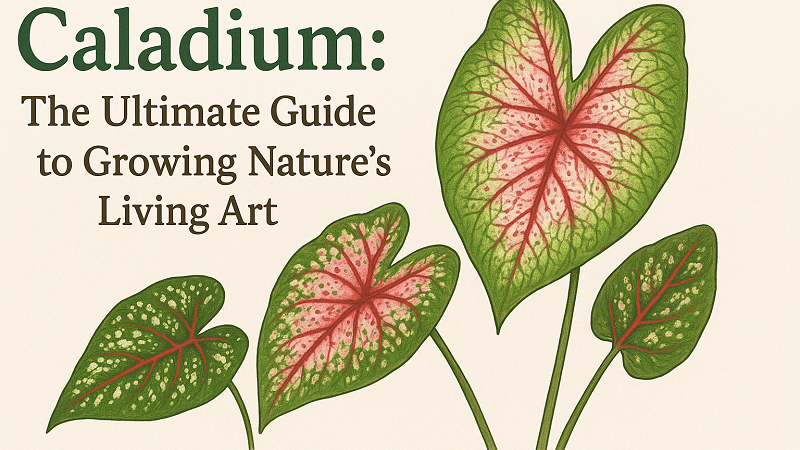The Caladium is not only a plant but a living painting with their gorgeous, artistically painted leaves in pink, red, white and green. These tropical perennials are also known as Angel Wings or Elephant ears because of their magnificent foliage which can turn any dark spot of your garden or house to an instant sunshine. Their needs are particular, but such spectacular exhibition of a healthy Caladium Plant is worth such pains, as it provides a prolonged period of dramatic color and texture.
Why Choose the Caladium Plant?
The main beauty of the Caladium has to do with its heart shaped and gorgeous leaves. Caladiums also supply round-the-year color unlike flowering plants that only provide a short-lived display of color during spring before the first frost. They are unsurpassed in their versatility; they do a wonderful job in shaded garden beds, do well as striking container combinations and can be even grown as unique houseplants. They are the ideal choice in providing a luminous touch to the dark space where other colorful plants might not do so well.
Essential Caladium Care Guide
In order to have a healthy and vibrant Caladium Plant, it is important to recreate its natural habitat as nearly as possible that is in the tropics. The trick to success in the long run is to know its seasonal cycle.
Light and Temperature:
- Light: Light or partial shade or bright indirect light is preferred by caladiums. The blazing, unkind sun will burn their fine, paper-thin leaves leaving them with brown spots that are not pretty.
- Temperature: They are tropical plants hence heat loving. They are most adequately cultivated at temperatures of 70 degrees centigrade (21 o C 29 o C) and are susceptible to low temperatures of less than 60 degrees centigrade (15 o C).
Watering, Soil, and Feeding:
- Watering: The soil should also be kept moist, but never waterlogged. Tuber rot can be avoided by having good drainage. They might need to have water regularly during hot weather.
- Soil: A vigorous, well-draining potting mix consisting of peat and good content of organic matter is preferable.
- Fertilizer: Feed the plants after every 4-6 weeks in the growing season with a balanced water soluble fertilizer to promote their active leaf growth.
Understanding the Dormancy Cycle
The most important thing about Caladium that new growers are not used to is that they have a period of dormancy that is mandatory.
- During Autumn: Your caladium will naturally fade away with the change in daylight and temperature. The leaves will turn yellow and wilt, it is a natural process and it is not a failure.
- Overwintering Tubers: In colder regions the tubers have to be removed out of the ground following the initial frost. They should be left to dry for a week, and put into a box of peat moss, or vermiculite, in a cool, dry locality (say 50-60F) to be kept till the winter.
- Rebirth in Spring: Re-plant the tubers in the spring after the risk of frost has been overcome, and the ground is warm. They will grow again with good services, and will soon produce another crop of lovely leaves.
Popular Caladium Varieties to Explore
The variety of the genus Caladium is astonishing. The most notable ones are:
- White Queen: This plant has bright red veins and green edges of the white leaves.
- Florida Red Ruffles: Gives leaves of a deep red, with a great deal of ruffling, which do not lose their color in sunny places.
- Miss Muffet: This is a dwarf with splashed leaves of lime-green in burgundy spots.
With the proper proportion of shade, moisture and warmth, one can experience the great beauty of the Caladium Plant throughout a number of seasons. To be further inspired by the way to present these and other beautiful plants in your house, visit Yourhomify. Find beautiful interior design, plants and Smart devices at YourHomify. Find cheap, quality necessities at every part of your house.



Leave a Reply